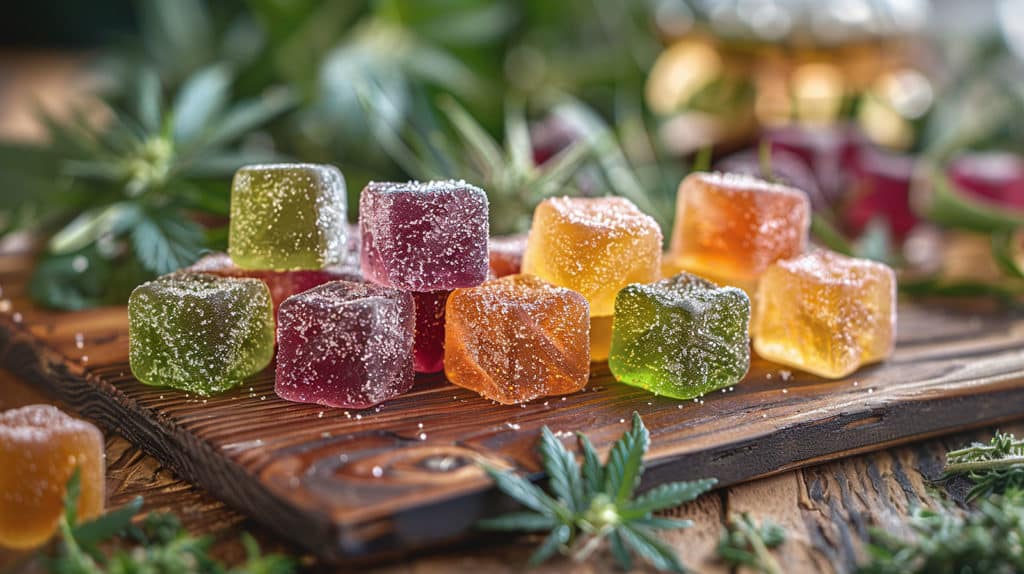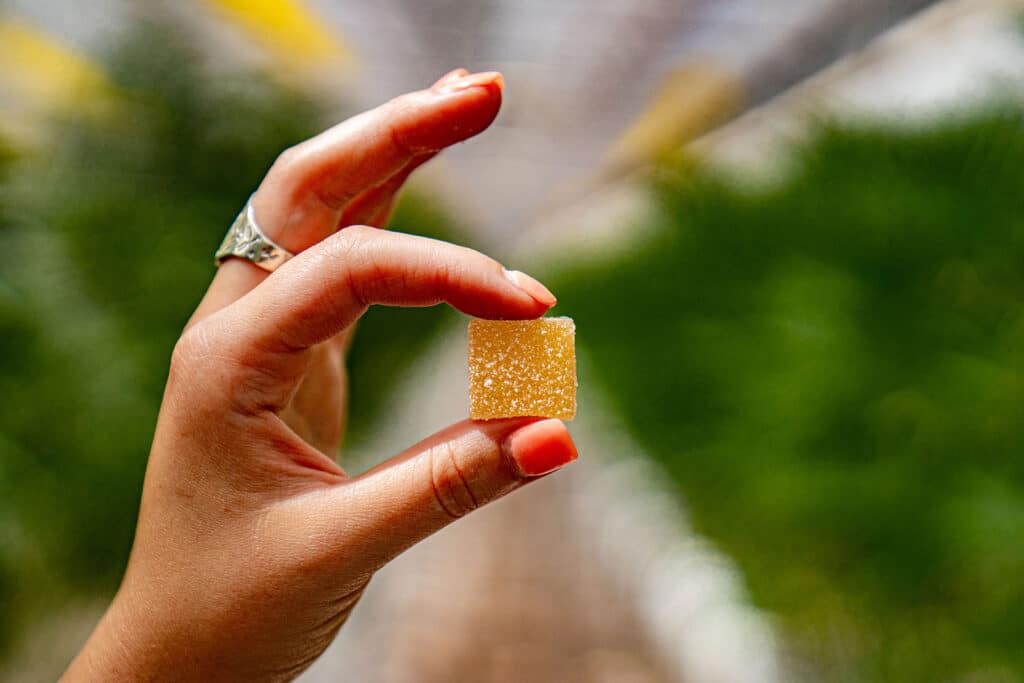For a number of reasons, marijuana use has increased over the last several years and so have the ways that it can be consumed. Although edibles are not a new manner of doing so, their popularity as a consumption method has risen as well, a couple of the reasons being how much more easily it is to consume them in a discreet manner versus smoking or vaping and their ease of use in general.
What exactly are cannabis edibles? They are foods that include marijuana, ranging from homemade brownies and other baked goods to commercially produced products, such as gummy bears and chocolates. Edibles can also be in liquid form, but the word usually refers to food.
Those who are consuming or considering having edibles should note what types are available. The most important distinction is between sativa and indica strains. Although there are several specific differentiations between strains within these subspecies, ones from the Cannabis sativa plant are generally more energizing while those from the Cannabis indica plant tend to be more relaxing.
Also, there is an increasing focus on hybrid strains, which incorporate a blend of these two.
A third strain, ruderalis, exists, but it is rarely used as its effects are muted and limited.

Table of Contents
Understanding the Cannabis Plant
There are a few notable physical differences between sativa and indica plants.
Sativa leaves tend to be thinner and greener than indica leaves while sativa plants are usually taller at around 5-20 feet as compared to indica plants’ usual height of about 2-4 feet. As for where they are usually grown, sativa plants tend to thrive in tropical, humid climates while indica plants are normally more comfortable in drier, mountainous locales.
All cannabis plants contain cannabinoids, most notably THC (tetrahydrocannabinol) and CBD (cannabidiol). THC is a psychoactive ingredient that has the potential to create a sense of feeling high while CBD is similar but without the ability to cause the user to get high. Although marijuana laws differ from place to place, products with minimal THC are usually easier to legally find.
Generally, sativa plants have more THC than CBD, sometimes a lot more, while indica plants normally possess more CBD than THC but with not much difference between the two amounts.
Another feature of marijuana strains to note are their terpenes or their smells, more specifically the differences in smell between them. For example, what you smell when you sniff a lemon or an orange is related to that respective fruit’s terpenes.
Common terpenes that are found in cannabis include caryophyllene, linalool, limonene, myrcene, pinene and terpinolene, and these and others can play significant roles in the ways that different edibles affect you.
Common Effects of Sativa Edibles
Budtenders will usually recommend sativa edibles to those who are looking to experience an increased energy level, greater alertness and an improved ability to focus. They can also enhance a user’s creativity and elevate their mood, sometimes creating a euphoric state.
For these reasons, there will normally be an accompanying recommendation to only consume them during the day – i.e. not when sleep is desired soon. Also, some prefer having them when they are about to be in a situation in which being social is important.
However, there are also risks. Overstimulation can result as can restlessness, anxiety and an increased heart rate. In the bigger picture, there is a notable potential for dependence, particularly in those who possess addictive tendencies.
Common Effects of Indica Edibles
In most cases, consuming an indica edible will result in sedation and being able to fall asleep more easily while it could also serve as a muscle relaxer. Those who are suffering from stressful or similar situations or simply looking to relax may benefit while some users experience pain relief, including from chronic pain.
As a result of those likely effects, indica edibles normally should not be consumed early in the day as nighttime consumption is likely better, depending on what is desired. Of course, if you are going to engage in an essential part of your daily functioning soon after having an indica edible, you should instead refrain as sedation may not be for the best at this time.

Another risk is that it usually causing an increased appetite may lead to weight gain in regular users although that same con is a benefit for those who are looking to increase their weight.
There is a possibility of dependency forming in those who have started to depend on this type of edible for sleep or a general sense of being relaxed.
Key Factors That Influence Edibles’ Effects
There are some key factors to consider that will influence the effects that edibles will have on you.
THC and CBD: The Entourage Effect
It is essential to note not just how much THC or CBD is in an edible but also their relation to each other. That is because they not only have their own effects, but they also influence each other. In particular, CBD in edibles has been shown to inhibit the breakdown of THC that is also in them. As a result of this entourage effect, the impact of that THC is strengthened.
Dosage Considerations
The size of the dosage is an essential element of this experience. This is especially true for those who do not have much experience, but everyone should take note of the dosage size in addition to the strain being used.
Generally, start with a low dose and make gradual adjustments from there. If you are used to smoking or vaping marijuana, note that you will not immediately feel the effects of an edible. It may take an hour or two for them to start and four hours for them to be fully realized. Also, the body metabolizes more of the marijuana when it is in edible form, so the high and other effects will usually ultimately be greater versus smoking or vaping the same amount of it.
In other words, wait a few hours before ascertaining if the dosage was too low for you.
Otherwise, keep in mind that your own body, your own tolerance levels and metabolism, will play a significant role as the exact same amount of an edible may affect you much more than it does your friend or vice versa. And keep in mind that too much of a good thing being bad very much applies to edibles.
Also note that the risks that accompany overconsumption of edibles can be significant. Doing so could result in paranoia, hallucinations, anxiety, agitation, confusion, vomiting, impaired motor ability, increased blood pressure and heart rate and cardiac events.
Alternatives to Cannabis for Managing Mental Health
If you are consuming cannabis products, including edibles, with the intent to manage your mental health, you should proceed with caution. While they may initially seem helpful, the long-term effects of cannabis, particularly the effects of edibles, can be complex. For example, long-term anxiety and depression may worsen with extended edible use, and sleep quality can be negatively impacted as edibles often disrupt deep sleep. The effects of THC, the primary psychoactive compound in cannabis, can vary significantly depending on the type of cannabis product and individual factors.
Therefore, alternative mental health management strategies may appear less immediately effective, but their benefits are often more sustainable. Natural alternatives to cannabis products include meditation and mindfulness practices, exercise, healthy lifestyle habits, and professional mental health treatments like psychotherapy.

When to Seek Help for Cannabis Dependency
Some individuals develop a cannabis use disorder after consuming cannabis strains and cannabis products, including edibles, becoming dependent on the substance. If edibles or other forms of cannabis have become an unhealthy coping mechanism, seeking help and replacing them with healthier coping strategies is essential.
Signs of cannabis use disorder include developing a high tolerance, experiencing negative impacts on school, work, family, or social life, and an inability to stop using despite wanting to. It’s important to be aware of the different effects of cannabis, including the potential for unwanted side effects.
Illinois Recovery Center provides support for those seeking to reduce or eliminate their consumption of cannabis products. This support can include medical detox for cannabis withdrawal symptoms, behavioral therapy and counseling, and a holistic approach to managing cravings, preventing relapse, and other aspects of the treatment process.
Understanding the different types of cannabis, including sativa strains, indica-dominant strains, sativa-dominant strains, and sativa/indica hybrids, is important. These strains of cannabis can have different effects, ranging from energizing and uplifting effects associated with some sativa strains to relaxing and sedative effects associated with indica-dominant strains. The terpene profiles of different strains also contribute to their unique effects.
Some individuals use cannabis for pain management, seeking pain-relieving effects, while others use it to unwind or for daytime or nighttime use. It’s important to consult with a dispensary or healthcare professional for medical advice regarding cannabis use, especially for beginners. Understanding the THC content, as well as the presence of other cannabinoids like CBN and CBG, is crucial. The endocannabinoid system plays a role in how the body processes cannabis. It’s important to consider the desired effects and potential side effects before using any cannabis product. Remember, responsible cannabis use involves thorough research into the product and its effects. Recognize when professional help is needed, particularly if dependency develops.

Conclusion
If you choose to consume cannabis edibles, do so responsibly. Research the product thoroughly, including its intended and actual effects. Recognize when professional help is necessary, such as if dependency develops.
If you would like to take advantage of Illinois Recovery Center’s comprehensive addiction and mental health treatment services, including dual diagnosis programs, contact us today.



